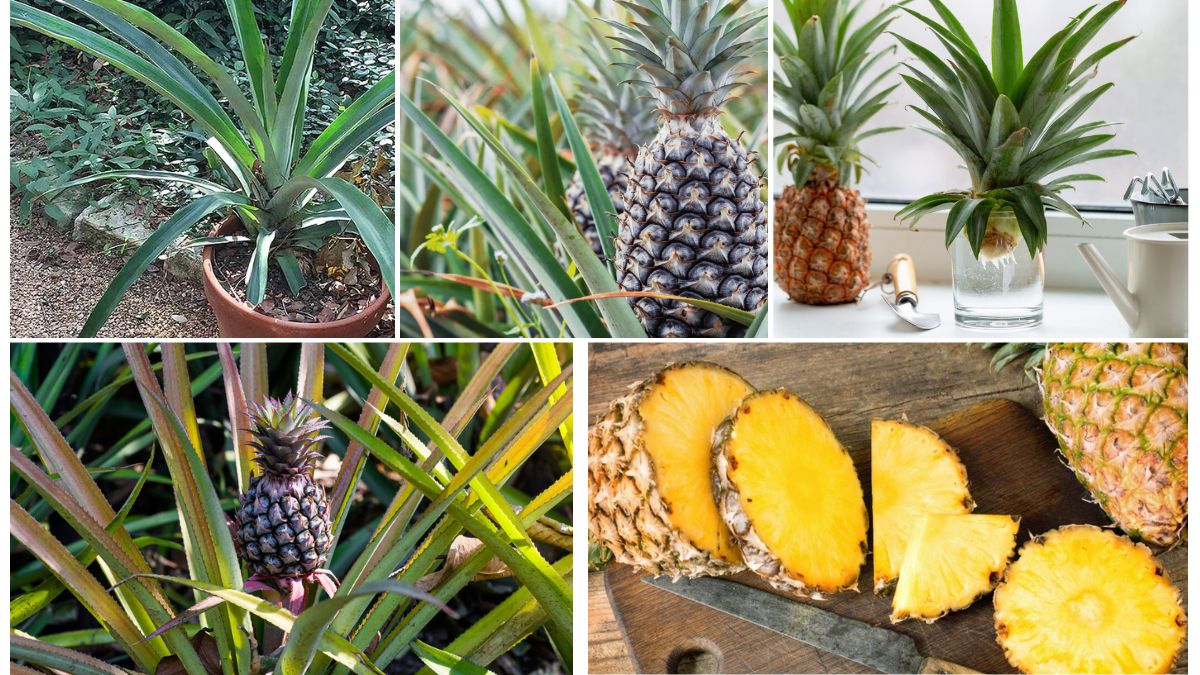Pineapple (Ananas comosus) is a tropical fruit known for its vibrant flavor, low maintenance, and ornamental appeal. Whether grown in a garden or a pot, pineapple plants need the right nutrients to thrive, flower, and fruit successfully. One of the key components of successful pineapple cultivation is proper fertilization. This article explores the best fertilizers for pineapple plants, how to use them, common mistakes to avoid, and tips to maximize growth and fruiting.
Understanding the Nutrient Needs of Pineapple Plants
Pineapple plants are heavy feeders and require a balanced nutrient profile. The three primary macronutrients—Nitrogen (N), Phosphorus (P), and Potassium (K)—are essential for healthy growth, root development, and fruit formation.
- Nitrogen (N): Promotes lush, green foliage.
- Phosphorus (P): Essential for strong root development and flower initiation.
- Potassium (K): Crucial for fruit development, size, flavor, and disease resistance.
Additionally, pineapple plants benefit from secondary nutrients and micronutrients like calcium, magnesium, sulfur, iron, zinc, and boron, especially when grown in nutrient-depleted soils or containers.
Top Fertilizer Types for Pineapple Plants
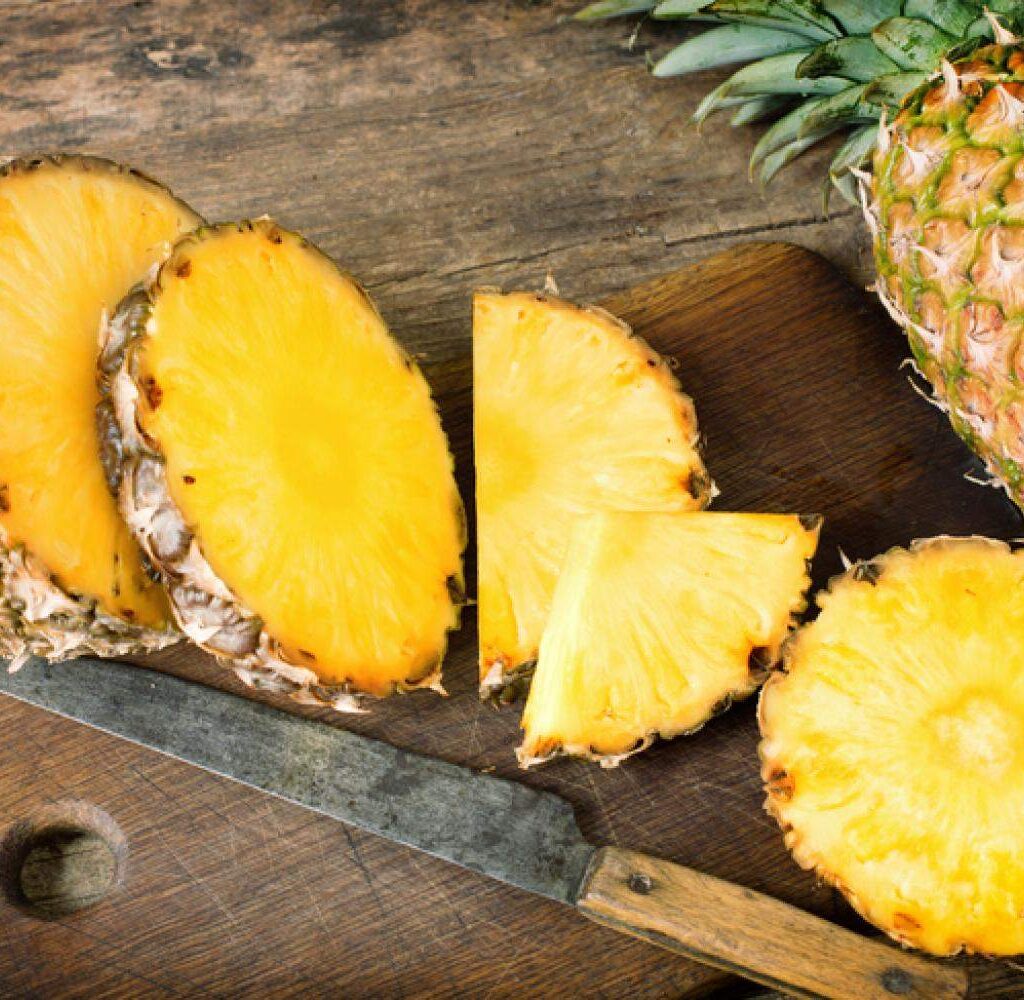
1. Balanced NPK Fertilizers (10-10-10 or 14-14-14)
Best for: General growth in the early stages.
Balanced fertilizers provide an even distribution of N, P, and K, ideal for young pineapple plants that need strong foliage and root systems. These are commonly available in granular or slow-release forms and can be applied every 6–8 weeks.
Tip: Apply around the base, not on the crown, to avoid burning the plant.
2. High-Potassium Fertilizers (10-10-20 or 8-10-20)
Best for: Flowering and fruit development stages.
Once the plant matures and starts forming fruit, high-potassium fertilizers improve the size, sweetness, and juiciness of the pineapples. Potassium also boosts disease resistance and helps the plant tolerate drought.
When to apply: Start applying when the plant reaches maturity or shows signs of flowering.
3. Organic Fertilizers (Compost, Aged Manure, Worm Castings)
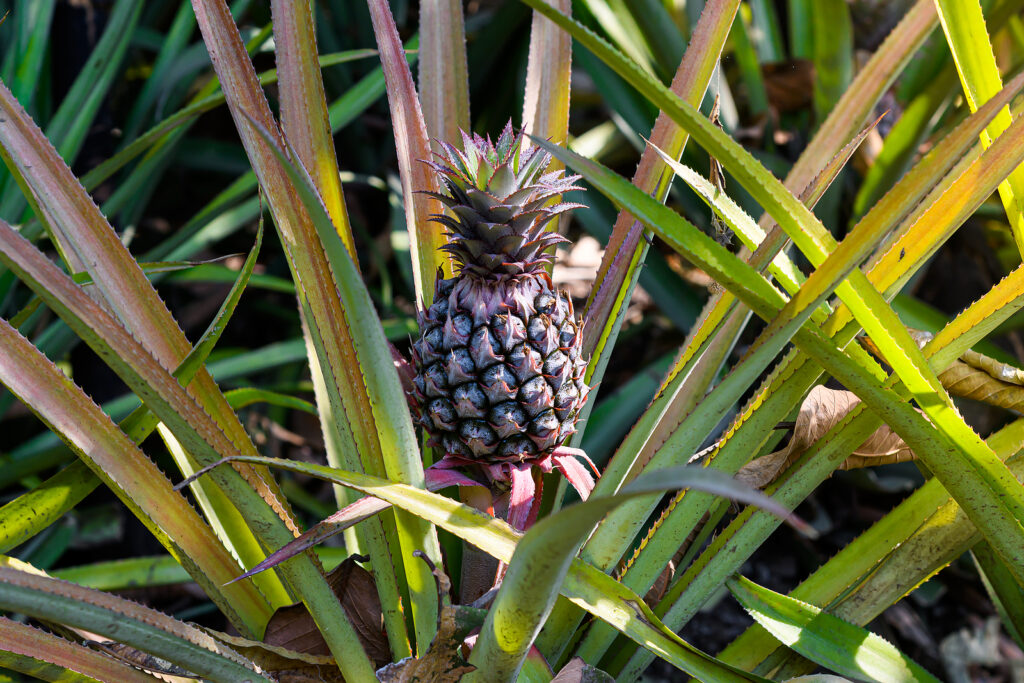
Best for: Sustainable, long-term soil health.
Organic fertilizers improve soil structure, increase microbial activity, and release nutrients slowly. They are safe, eco-friendly, and particularly useful when growing pineapples in garden beds.
Application tip: Work organic matter into the soil every 1–2 months for best results.
4. Foliar Fertilizers (Liquid Seaweed, Fish Emulsion, or Micronutrient Sprays)
Best for: Quick nutrient absorption and correcting deficiencies.
Foliar sprays deliver nutrients directly through the leaves. They’re ideal when plants show signs of deficiencies like yellowing leaves or stunted growth. Foliar feeding can also supplement regular soil fertilization.
Tip: Apply early in the morning or late in the afternoon to avoid leaf burn.
5. Epsom Salt (Magnesium Sulfate)
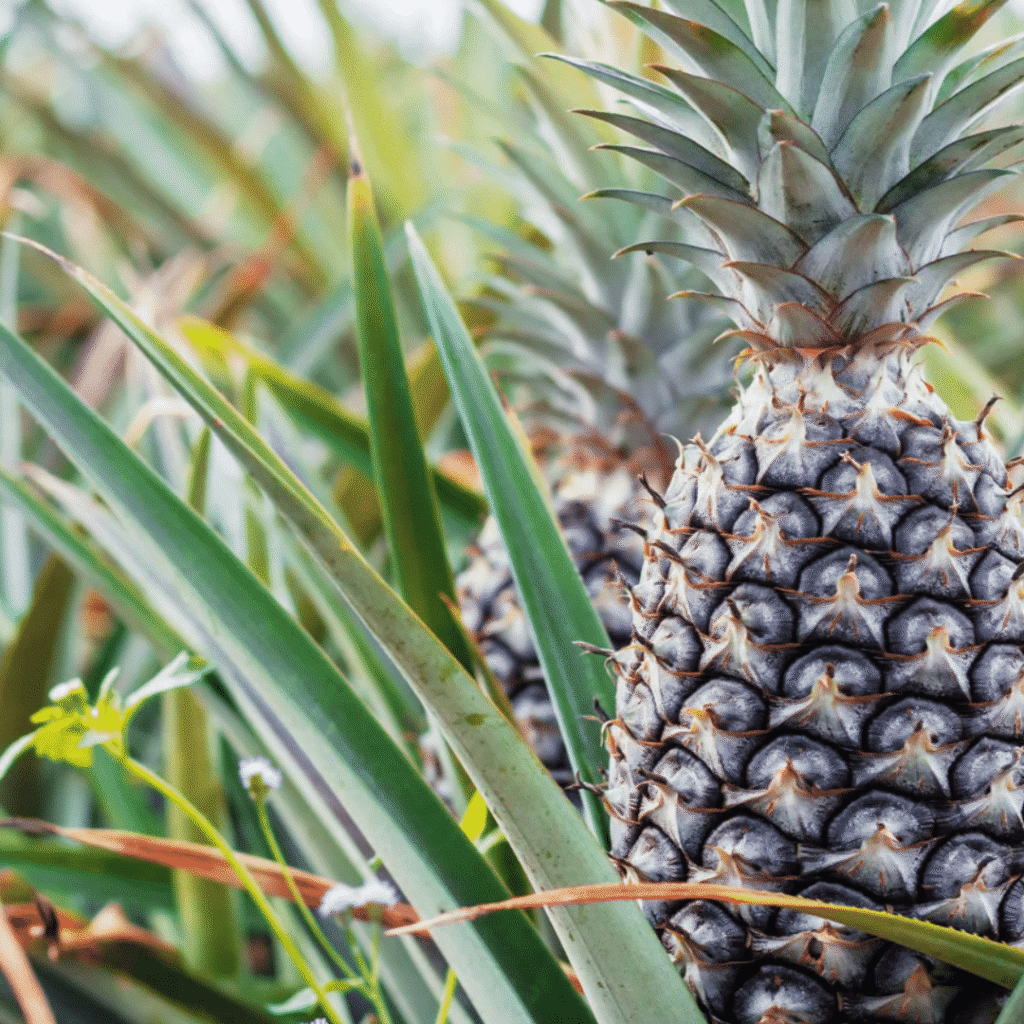
Best for: Enhancing green foliage and fruit sweetness.
Pineapples often suffer from magnesium deficiency, which causes leaf yellowing. Epsom salt helps correct this and improves chlorophyll production and sugar translocation in fruits.
How to use: Mix 1 tablespoon per gallon of water and spray or water monthly.
Fertilizing Schedule for Pineapple Plants
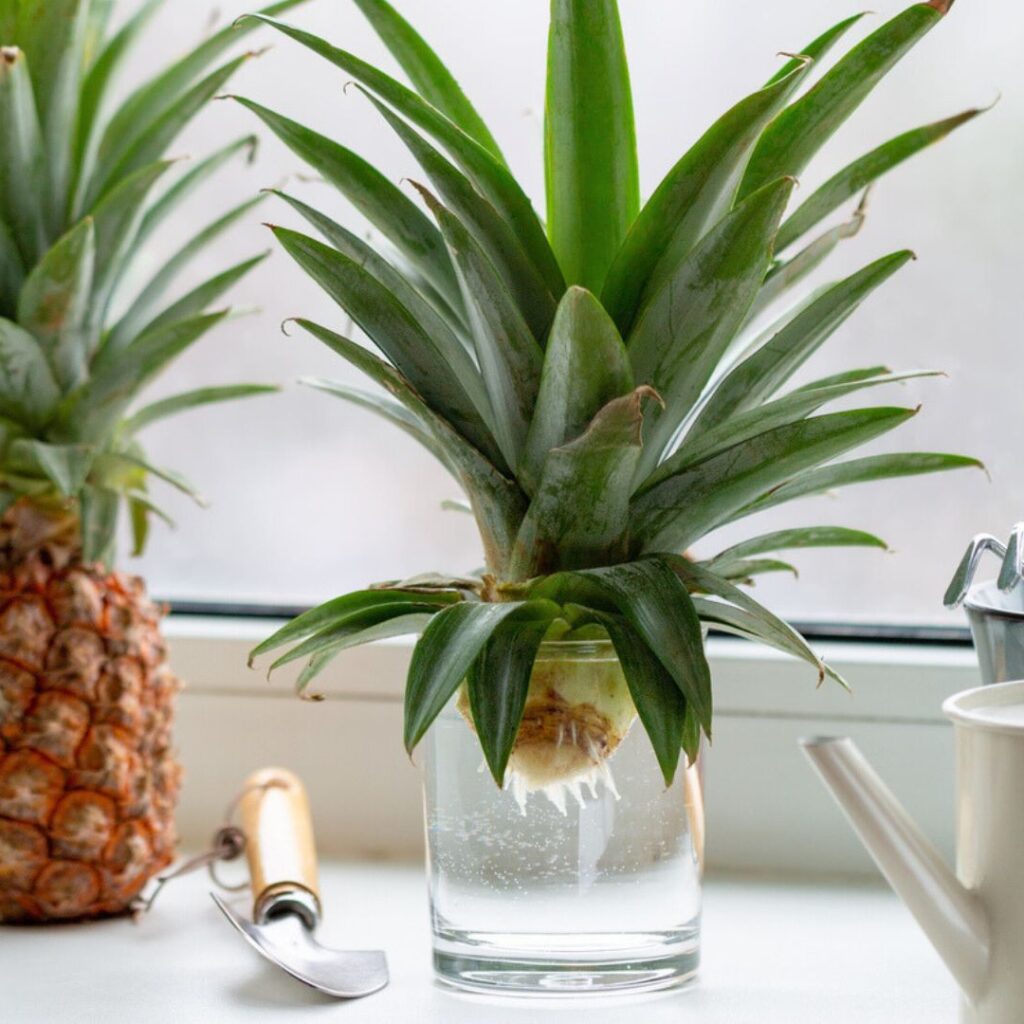
| Growth Stage | Recommended Fertilizer | Frequency |
|---|---|---|
| Early Growth | Balanced NPK (10-10-10) | Every 6–8 weeks |
| Mid Growth | Balanced or Slightly Higher N | Every 6 weeks |
| Pre-Flowering | High Potassium (10-10-20) | Every 4–6 weeks |
| Fruiting Stage | High Potassium + Micronutrients | Every 4 weeks |
| Year-Round (Indoor) | Foliar + Organic Supplements | Biweekly to Monthly |
Signs Your Pineapple Plant Needs Fertilizer
Pineapple plants are slow growers, so nutrient deficiencies may go unnoticed. Watch for these signs:
- Pale or yellowing leaves: May indicate nitrogen or magnesium deficiency.
- Slow or stunted growth: Often a result of poor nutrition or soil quality.
- Poor flowering or no fruit: Suggests lack of phosphorus and potassium.
- Small or sour fruit: Indicates potassium or calcium deficiency.
Address these issues quickly with the appropriate fertilizer to keep your plant on track.
Mistakes to Avoid While Fertilizing Pineapples
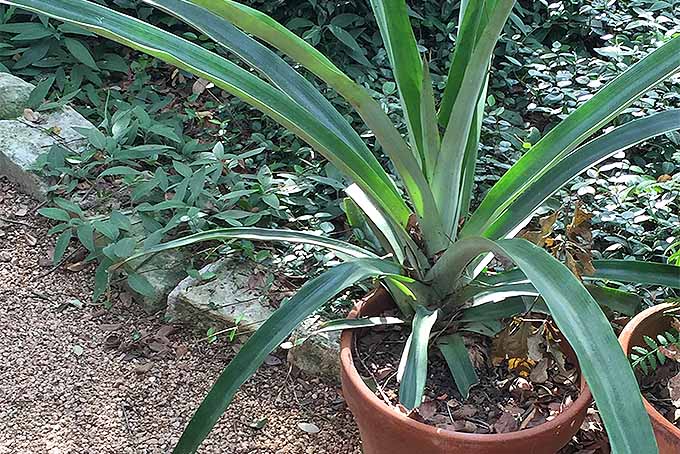
- Over-fertilization:
- Can burn roots or cause excessive leafy growth at the expense of fruit.
- Stick to recommended amounts; more isn’t always better.
- Fertilizing the crown or center:
- Fertilizer in the center cup can cause rot. Always apply around the base.
- Ignoring soil pH:
- Pineapple prefers slightly acidic soil (pH 5.5–6.5). Fertilizer is ineffective in alkaline or overly acidic conditions.
- Not adjusting for pot vs. ground:
- Potted plants need more frequent but lighter feeding due to quicker nutrient loss.
- Using only one fertilizer type:
- A good strategy includes a mix of granular, liquid, and organic inputs for a comprehensive nutrient profile.
Best Fertilizers Available (Commercial Recommendations)
Here are some popular and trusted brands for pineapple plant fertilization:
- Osmocote Smart-Release Plant Food (14-14-14): Slow-release formula, ideal for beginners.
- Jobe’s Organics Fruit & Citrus Fertilizer (3-5-5): Organic granules with beneficial microbes.
- Miracle-Gro Performance Organics: Liquid option suitable for pots and containers.
- FoxFarm Big Bloom Liquid Concentrate: Rich in micronutrients and bat guano, great for flowering.
- Down to Earth Langbeinite (0-0-22): Excellent potassium supplement with magnesium and sulfur.
Pro Tips for Better Fertilizer Use
- Water before and after fertilizing to prevent root burn.
- Use mulch around the plant to retain moisture and slowly release nutrients.
- Test your soil every 6–12 months to monitor pH and nutrient levels.
- Rotate organic matter types to avoid nutrient imbalance.
- Introduce beneficial microbes through compost tea or worm castings for better nutrient uptake.
Conclusion
Feeding your pineapple plant the right fertilizer at the right time is essential for healthy growth and sweet, juicy fruits. A successful fertilizing plan blends balanced NPK fertilizers, organic materials, and micronutrient support. By understanding the plant’s specific needs and avoiding common fertilization mistakes, you’ll be well on your way to a thriving pineapple harvest—whether you’re growing it in a backyard garden or a compact container on your balcony.
With just a bit of care and the proper fertilizer routine, your pineapple plant will reward you with a tropical bounty that’s both delicious and satisfying to grow!
